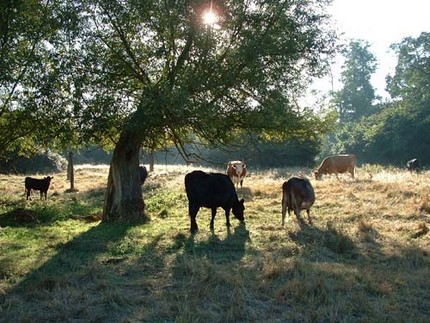
A ranch must be divided into at least two pastures before even the least complex two pasture/one herd deferred-rotation grazing system can be implemented. If not cross-fenced, the land manager would need to have access to other areas where livestock could be moved to during the prescribed rest periods. Electric fencing is a lower cost and less labor-intensive alternative to barbed wire for dividing a ranch into multiple pastures.
For a deferred-rotation grazing system to be most effective, all the pastures in the system should be more or less equal in size and/or have similar grazing capacities (e.g., pastures on the most productive, deep soils of a ranch would have higher livestock grazing capacities and should therefore be smaller than pastures on shallower, less productive soils).
Individually fenced improved grass pastures on a ranch should be incorporated into a deferred-rotation grazing system. Rotating livestock through the tame grass pastures would help provide longer/more frequent periods of deferment for the native pastures since most species of non-native forages can generally withstand more intensive grazing pressure than native plants can.
Note: most species of “improved” livestock forages (such as coastal bermuda, Klein grass, Old World bluestem, etc.) do not have much value to wildlife, except possibly as cover for some species, especially if grown in dense monocultures with very little diversity of native plants.
When wildlife such as deer are seen in an improved grass pasture, they are likely there because of the well-fertilized “weeds” growing within the grass stand than for the grass itself. A highly maintained, fertilized, improved grass pasture that receives periodic applications of herbicides will have a dense monoculture of grass and few weeds, and therefore will not be attractive to wildlife. Although it may be contradictory to the objective of producing as much livestock forage as possible, it is recommended that herbicides be used judiciously to allow tame grass pastures to have a component of weeds.
